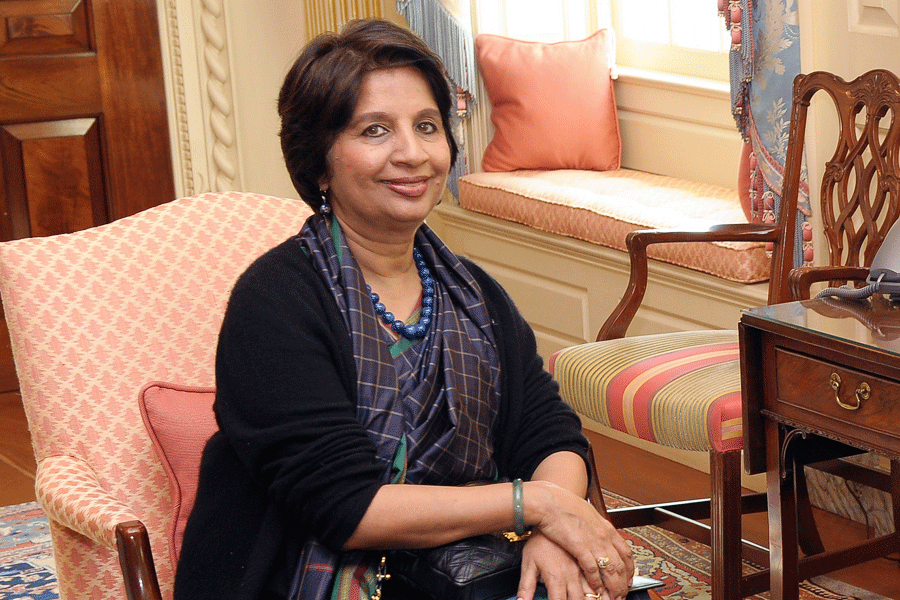|
|
Made for Each Other: Fashion and the Academy Awards By Bronwyn Cosgrave, Bloomsbury, £ 15.00
In 1940, Vivien Leigh picked up the actress Oscar for playing Scarlett O’ Hara in Gone With the Wind. She was wearing the “Red Poppy Evening Gown”. “Green stemmed poppies exploded like fireworks upon the long chiffon gown.” Clutching the Oscar, Leigh thanked in particular “Mr David Selznick, all my coworkers, and most of all Miss Margaret Mitchell”. Yet, on the sets of the film, her relationship with Selznick, the redoubtable Hollywood producer of films like Rebecca and Spellbound and boss of Selznick Studios, was nothing less than stormy. Selznick had found the Royal Academy of Dramatic Art-trained Leigh after an epic search. She had looked satisfactory, especially with her bright green eyes that lit up her face just like Scarlett’s. But her flat chest had gone undetected during the screen test. It was a disaster. Before the camera, the tops of Leigh’s antebellum gowns just caved in. On Selznick’s command, Walter Plunkett, the film’s costumer, would bind Leigh’s breasts with adhesive tape every day. “I have perfectly good ones of my own!” protested Leigh and claimed that the adhesive tape cut off her circulation.
Bronwyn Cosgrave’s Made for Each Other: Fashion and the Academy Awards sets out to chronicle, year by year almost, the red carpet parade of the dresses that actresses wore to the Academy Awards since they were first given away in 1929. In a wonderfully gossipy — or should we say anecdotal? — style, Cosgrave, a British fashion writer who has worked for the best publications in the trade, ends up doing much more. The dresses, which could have passed off as just exquisite confections of vanity from the outside — Maria Grazia Cucinotta, nominated for an Oscar for her role in Il Postino, had innocently asked: “It’s a fashion show, no?” — sometimes revealed much more than a delicate clavicle. If Leigh’s adhesive tape was an accomplished metaphor for the grip that studio bosses had over their actors in early-20th-century Hollywood, Cosgrave also shows how, as necklines plunged or tightened up, hemlines shrank or dipped, the Oscar gown rebelled or acquiesced, Hollywood evolved from a rigid autocratic studio system to its present hierarchy dominated by directors, the box office and its assembly-line stars. Though Leigh was as graceful to Selznick on Oscar night as was expected of a well-brought up lady, the studio tyrant must have noticed that her gown was a far cry from her Gone With the Wind costumes. Couturier Irene had designed it with a light, inner support within its bodice that required nothing to be worn beneath it.
Bette Davis of the wild, wild eyes spelt out her outrage. She had a tough time at Warner Bros, one of the Big Five studios of the Golden Age of Hollywood. In two-and-a-half years during the mid-Thirties there, she had been made to work for 16 films. “Actors frequently worked until midnight and were told to report back early the next morning,” said an insider. Davis was the star of Warner, the reason why she was kept under a particularly tight leash. In 1936, she was nominated for the actress award for Dangerous for her role as a washed-up Broadway actress. But earlier, Davis had also been forced to work in Housewife, which she felt was a trivial love story. She refused to report for duty. Warner suspended her. She came running back to the studio; she needed the money. However, for the Oscars, as she picked up a statuette, she did not look like a Hollywood star. She was wearing the dowdy navy-and-white two-piece dress she had worn on the sets of Housewife. The message to Warner was clear.
The year 1955 saw another stand-off between an actress and a studio. Grace Kelly had been suspended by MGM for refusing to act in some films offered to her. But she was nominated for the actress role at the Oscars for The Country Girl. MGM didn’t want to risk letting loose a suspended actress as their Oscar nominee. They lifted her suspension. Kelly, with yellow rosebuds nestled in her chignon, lifted the Oscar. Two years ago, the Oscars had gone live on television. Judy Garland, competing with Kelly that year, had just given birth to her third child and was still confined to the hospital bed. She was heavily tipped to win too, and was surrounded on all sides by TV crew from NBC, who kept reassuring her she would win. When she didn’t, they left abruptly without a word. She was wearing Beverly Hills sleepwear. The media’s bad manners aren’t new. In the Fifties, Marlene Dietrich paved the way for individual French designers to Hollywood. She swore everlasting loyalty to Christian Dior. So did Audrey Hepburn, a little later, to Givenchy. In 1995, Before the Devil, Uma Thurman, nominated for Pulp Fiction, wore Prada.
As flower-power bloomed in the Sixties and Seventies, there were some spectacular shows. Faye Dunaway in 1967 in a slinky black flowing gown with hand-crafted black satin calla lilies, toads and frogs edging its train and neckline (picture). Barbra Streisand in 1969 in sheer bell-bottoms that bared her rear unapologetically and detonated all the flashbulbs as her escort, her estranged husband, Elliott Gould, admitted to flying high on marijuana. Cher kept the fire burning. In 1986, she sent the Academy reeling in a black Bob Mackie creation high on plumage.
Why is it that Oscar dresses are not so memorable any more? Why do so many top stars look like each other? The book, a very good read, possibly becomes slightly less interesting towards the end because the ‘characters’ vanish with the Eighties and Nineties. The last time someone really caught the eye was in 2001, when singer-actress Björk appeared in a tutu that looked like a perishing swan. She was also carrying a large, cream-coloured egg that rested by her seat at the presentation. Cosgrave’s book is a meticulously-researched effort, but the hard work never interferes with the breeziness. Why can’t Indian fashion journalists write a book like this on Bollywood? Though for that, filmi fashion here would have to be serious fashion first. Only a few complaints. It would have helped if the book were not so neatly chronological. It ends too abruptly, somewhat like the NBC crew’s exit. And why is Meryl Streep missing? She was nominated 10 times and won the award twice. Is she too drab?











